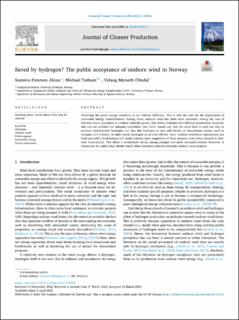Saved by hydrogen? The public acceptance of onshore wind in Norway
Journal article, Peer reviewed
Published version

Åpne
Permanent lenke
https://hdl.handle.net/11250/3093110Utgivelsesdato
2023Metadata
Vis full innførselSamlinger
- Department of Geography [634]
- Registrations from Cristin [9791]
Sammendrag
Achieving the green energy transition is not without difficulty. This is also the case for the deployment of renewable energy infrastructures. Among these, onshore wind has often been contested. Taking the case of Norway where opposition to onshore wind has grown, this article evaluates how different production, financial, and end-use schemes can mitigate opposition. One factor stands out: that the wind farm is used not only to produce emission-free hydrogen but that this hydrogen is also sold locally to decarbonize sectors such as transport and industry. In other words, hydrogen on its own will not “save” onshore wind from contestation, but hydrogen with a local purpose will render citizens more supportive of these projects, even when situated in their own municipality. This effect is particularly strong among younger and more educated citizens. However, it transcends the rural-urban divide which often structures attitudes towards onshore wind projects.
